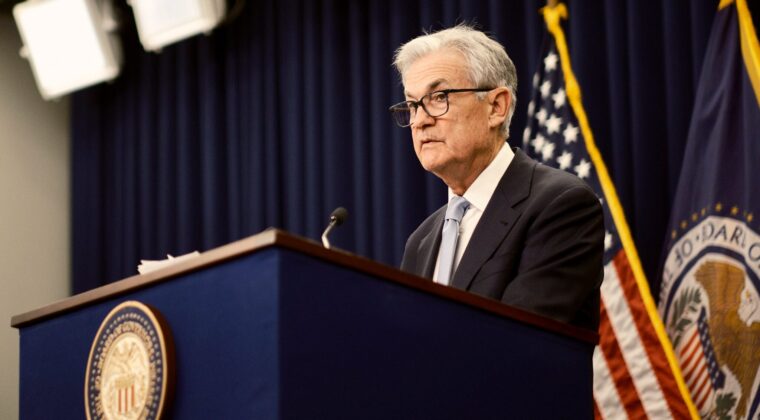-
- Plateformes de trading
- Application PU Prime
- MetaTrader 5
- MetaTrader 4
- PU Copy Trading
- Trader Web
- PU Social
-
- Conditions de Trading
- Types de compte
- Spreads, Coûts et Swaps
- Dépôts et Retraits
- Frais et Charges
- Heures de Trading

Investors hoping for a pause in rate hikes were disappointed as the U.S. Federal Reserve pushed ahead with a quarter-point hike at its interest rate decision on Wednesday. While way lower than 2022’s mega-hikes of 50 to 75 bps and in line with economist expectations, March’s 25-point hike is a calculated risk amid what is being termed the second-largest banking crisis in the U.S. – behind 2007’s collapse.
While some have pointed to the Fed’s aggressive pace of hikes as a contributing factor to the recent spate of bank collapses – including venture capitalist favourite Silicon Valley Bank – Fed Chair Jerome Powell has pointed out that it was the individual failure of SVB’s management to manage interest rate risks.
Meanwhile, the other major bank collapse, Credit Suisse, has been some time coming, with the embattled bank finally buckling under a series of scandals.
For all the turmoil, lifelines have been thrown, with Credit Suisse being bought over by UBS in a deal brokered by the Swiss Central Bank; while U.S. regional bank collapses have been aided by an emergency plan from the Fed to maintain liquidity and safeguard customer deposits.
The big question: is the Fed in safe territory after implementing a 25-point hike? Amid the banking crisis, the Fed still has not lost sight of inflation, with Powell signalling not to expect rate cuts this year.That said, the previously mentioned ongoing increases of rate hikes “will be appropriate”, for example, have been lessened to the current “additional policy firming may be appropriate” – giving mixed messages.
The markets seem to be betting on a more cautious Fed, with the dollar taking a downturn on comparatively less hawkish messaging. Treasury yields are also sinking, while gold prices have edged upwards – possibly due to a dipping dollar and investors flocking to safety on the Fed’s calculated risk.
One other thing to consider is that the banking turmoil might have the effect of doing the Fed’s job for them. Interest rate hikes increase the cost of borrowing, which in turn, discourages spending and slowing the economy down. In the same vein, banks will start being much more cautious about lending – resulting in a similar effect to rate hikes. Whether this will be enough to cover ongoing inflation and lead the Fed to reconsider their view on rate hikes will remain to be seen.
Investors are reminded to look out for the next soonest measure of inflation, the Core PCE Price Index for February, which will be announced on Friday, 31 Mar at 15:30 (GMT+3).
As a friendly reminder, do keep an eye on market changes, control your positions, and manage your risk well.

Tradez le Forex, les indices, Métaux et plus encore avec des spreads faibles et une exécution ultra-rapide.
Inscrivez-vous pour un compte réel PU Prime grâce à notre procédure simplifiée.
Approvisionnez facilement votre compte grâce à un large éventail de canaux et de devises acceptées.
Accédez à des centaines d’instruments avec les meilleures conditions de trading.